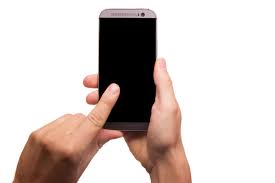Worldwide, startups work eagerly to change the design of tomorrow’s job market. And they are ready to come up with a new standard, edging out the classic job application.
HR Tech is growing rapidly worldwide. According to the niche, the traditional Human Resources could use a lot more technological impulses to become more efficient and be more customized. With Microsoft buying the professional social network LinkedIn for 26, 2 billion dollar, it became clear that HR Tech was serious matters.
As in today’s world, smartphones are one of the most powerful tools we possess. In fact, they recently surpassed desktop use.
 Strategic consultancy Kelton found a stunning 86 percent of active candidates use their smartphones to begin a job search. However, in most cases, it’s still a nightmare to apply on a shrunken down mobile device.
Strategic consultancy Kelton found a stunning 86 percent of active candidates use their smartphones to begin a job search. However, in most cases, it’s still a nightmare to apply on a shrunken down mobile device.
“Therefore, attracting this new generation of talent will require HR Tech to design their recruiting process under a mobile-first approach,” says Othamar Gama Filho, CEO of Talentify, in an interview by Chief Executive. Talentify is a Brazilian startup that provides a digital platform for staffing and recruitment.
“Conversion rates are 10 times better on web pages that have a mobile-first design. Current data suggest that only 2.8 percent of submitted applications come from a mobile-friendly website ”, continues Gama Filho.
2015 data shows that in the US, the majority of Hispanics and African-Americans had used their phone over the past year to find job information. Weak mobile functionality could limit diversity. Employers run the risk of isolating an enormous amount ability and potential.
“Since diversity and inclusion are key drivers of innovation and business growth, a mobile-first website should be a priority for employers”, concludes Gama Filho.
 Apps like SealJobs, Opportunity and Switch have jumped on this mobile-friendly job train. Candidates swipe through job announcements in true Tinder-style. Once a match is made in the digital heaven, it takes only a satisfying private chat with the company before the candidate can put on his workin’ shoes.
Apps like SealJobs, Opportunity and Switch have jumped on this mobile-friendly job train. Candidates swipe through job announcements in true Tinder-style. Once a match is made in the digital heaven, it takes only a satisfying private chat with the company before the candidate can put on his workin’ shoes.
In spite of all these mobile-friendly thumb applications, most people still prefer the peace and calm of their spacious computer. After working hard on a slightly customized cover letter, they attach it to a short and formal email together with their Curriculum Vitae and hope it might survive the 6 seconds-limit to be read.
But this is about to change. Recently founded Artificial Intelligence-platforms like Stella, already screen candidates and link them to suited jobs.
Newton “The smartest assistant for your job search” or Wade & Wendy (Wade the career advisor, Wendy the hiring assistant), share their AI with you to search a job and plan your career through relevant chat talks.
Of course, AI can only take this process so far. Recruiters will need to provide some human touch when making the final call or plan a face-to-face meeting to as to whether the candidate lands the job or not. Or not?
Imagine. An intelligent computer on the other side of the webcam shoots questions and listens carefully to your answers. It analyses not only what you are saying, but also how you are saying it. Your performance is grabbed. Within 10 minutes the same computer decides whether your profile is suitable for the company. Are you a team player? Are you a loner? A leader?
 When we talk, micro-expressions in our faces give away information. The faster-flashing eyes. The slightly raised eyebrow. They appear in a fraction of seconds.They are uncontrollable. In the 70’s, Paul Ekman, an American psychologist pioneered in the study of emotions and their relation to facial expressions.
When we talk, micro-expressions in our faces give away information. The faster-flashing eyes. The slightly raised eyebrow. They appear in a fraction of seconds.They are uncontrollable. In the 70’s, Paul Ekman, an American psychologist pioneered in the study of emotions and their relation to facial expressions.
For her PhD, Isabel Gonzalez combined Ekman’s theories with video analytics to uncover personality traits. The investigation led to the Belgium-based startup Facelytix. It wants to assess people by combining video technology and analytical processing via AI. Mid 2018, the first version of the platform will be released onto the market.
Contrary to the classic job application, you won’t have to wait for months anymore to get a reaction. And the company doesn’t have to crawl through an endless pile of curriculums vitae and do time-consuming talks that end up with a recruiter following his gut.
It all might sound a bit freaky. HR still is considered to be a human branch, not directly associated with technology. However, through technology, promising startups can make the job search and application process more objective with the same, inclusive criteria being applied to everybody.





